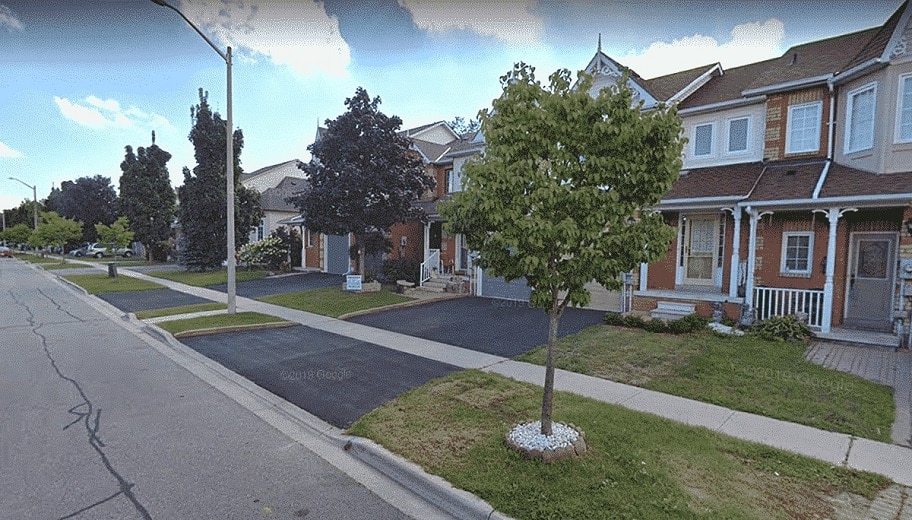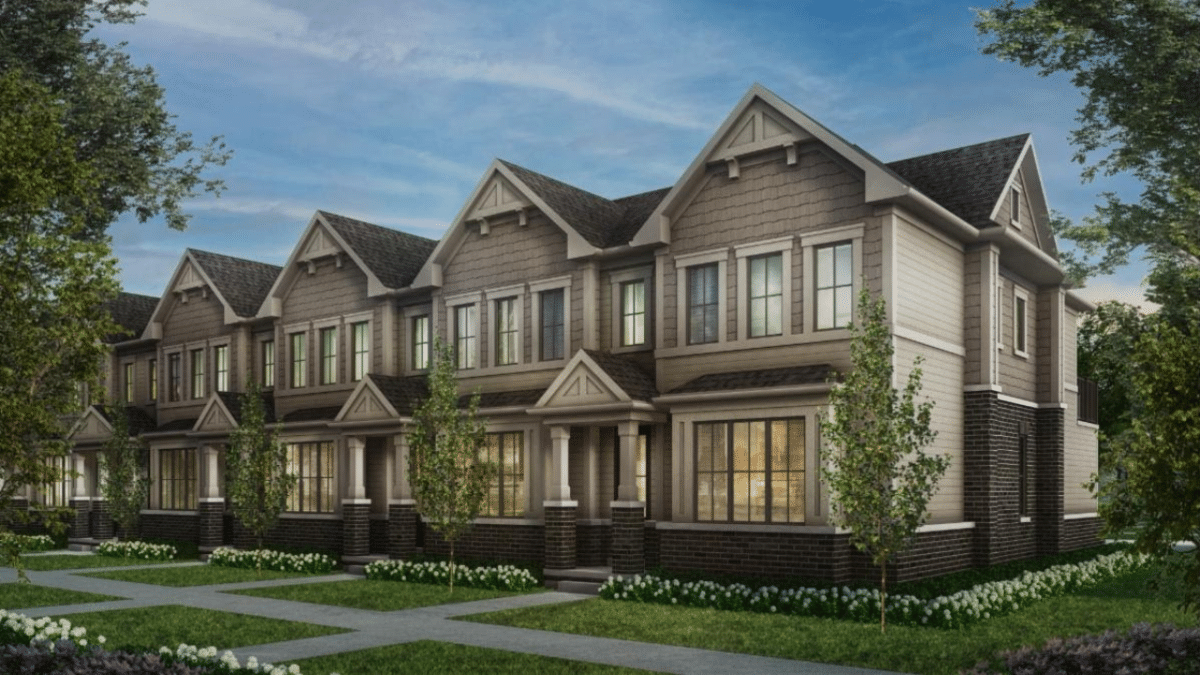List of New Homes in Oshawa
-
Tanglewood Homes
Pricing From Developer Sold Out
Conlin Rd E & Harmony Rd N, Oshawa, ON
Developer - Medallion Developments Inc
Occupancy - 2025
View Details -
Homeward Hills Homes
Pricing From Developer Sold Out
1040 Conlin Rd E, Oshawa, ON
Developer - Sorbara Group of Companies
Occupancy - 2025
View Details -
Heartwood Village
Pricing From $799,990!
Conlin Rd E & Harmony Rd N, Oshawa, ON
Developer - Laurelcrest Homes
Occupancy - 2025
View Details -
Harmony Creek
Pricing From Developer Sold Out
1254 Kettering Dr, Oshawa, ON
Developer - The Conservatory Group
Occupancy - 2022
View Details -
Park and Lake Homes
Pricing From $1,055,990
1440 Tradewinds Street, Oshawa, ON
Developer - Graywood Developments Ltd., Falconcrest Homes
Occupancy - 2026
View Details -
Palmetto Homes
Pricing From Developer Sold Out
Conlin Rd. E & Grandview St. N, Oshawa, ON
Developer - Treasure Hill Home Corp, Greenpark Homes
Occupancy - 2025
View Details -
Winchester Estates
Pricing From $849,900
2375 Ritson Rd N, Oshawa, ON
Developer - Menkes Developments Ltd.
Occupancy - 2026
View Details -
Grand Ridge North Homes
Pricing From Developer Sold Out
742 Grand Ridge Ave, Oshawa, ON
Developer - Sunny Communities
Occupancy - 2024
View Details -
Columbus Homes
Pricing From Coming Soon!
454 Columbus Rd W, Oshawa, ON
Developer - Tercot Communities
Occupancy - TBD
View Details -
Kingmeadow Homes
Pricing From Developer Sold Out
Steeplechase Drive, Oshawa, ON
Developer - Minto Group Inc.
Occupancy - TBD
View Details -
Daniels FirstHome Oshawa
Pricing From Coming Soon!
1707 Ritson Rd N, Oshawa, ON
Developer - The Daniels Corporation
Occupancy - TBD
View Details -
U.C. Homes
Pricing From Developer Sold Out
2691 Durham Regional Rd 2, Oshawa, ON
Developer - Tribute Communities
Occupancy - 2023
View Details -
Eastmore Village
Pricing From Developer Sold Out
2585 Bridle Road South, Oshawa, ON
Developer - Delpark Homes
Occupancy - 2020
View Details
Why Should You Invest in Oshawa Real Estate?
The city of Oshawa is located in Southern Ontario, along the shores of Lake Ontario, along what is known as the Golden Horseshoe of Canada. Located within the Greater Toronto Area, Oshawa is part of the Durham Region, along with other cities, including Ajax, Pickering, Brock, and Whitby. More than 300,000 people live in Oshawa, which is estimated to increase by 16% over the next ten years. A new home in Oshawa will put you close to excellent communities, recreational facilities, parklands, and schools. A rising population has led to new residential developments in the city as well as the creation of more jobs. In the city, single-family detached homes are most common, followed by buildings over five storeys. Owning a new home in Oshawa gives you easy access to other cities of the Greater Toronto Area. There are highways located north and south of the city, including Highways 401 and 407, which allow residents to travel to neighbouring cities easily. With a car or using the GO Train, Oshawa residents can reach Toronto in less than an hour. Oshawa residents may also access public transportation via Durham Region Transit, which provides transportation options to all residents of Durham Region. The Oshawa Executive Airport, located in the northern part of the city, only provides general aviation and corporate business travel services. Residents have access to a variety of recreational opportunities in the city, including hiking on 27km of trails, exploring the downtown area, and attending events and festivals. Among the city’s attractions is Oshawa Centre, Durham Region’s largest shopping center with more than 230 stores. The city’s three waterfront parks, Lakefront West Park, Stone Street Park, and Lakeview/Lakewood Park, offer residents and visitors the chance to enjoy nature, or they can explore the trails that take them around 410 hectares of parkland.
Reasons to invest in new homes in Oshawa
One of the best reasons to invest in new homes in Oshawa comes with multiple beneficial reasons. One of them is the fast-growing real estate market, as growing real estate market brings more options to buyers who want to purchase better homes which directly increases the potential to make more money via real estate is much higher as well, coupled with the growing market is the overlooked potential for economic power as Oshawa is growing in demand for homes and that also increases the amount of jobs available. Oshawa also serves as a great escape from the chaos and crowded city areas like Toronto. The shift from crazy to a calm city allows for much-needed relaxation and more peace. This calm atmosphere also opens up pathways for people to connect with nature, as Oshawa is close to many forests that can be explored with friends, family, or even alone, which will serve as a reason to go outside and feel all the fresh air and natural sounds that make one appreciate Oshawa. Finally, the standard of living is much higher than in many other city locations as the money being spent and gained is constantly rising per year, leading to many more developments and opportunities in not just real estate, but all industries in Oshawa. For more specific reasons, as of July 2024, the average detached home price has decreased by 4.8% to $862,525 compared to last year, and semi-detached homes had a month-by-month decrease by 2.1% bringing the sales price to $676,900. This showcases that all homes in Oshawa have had a sales decline of 8.9% since June 2024, but it has gained an overall increase in sales by 5.7%. These factors indicate that homes in Oshawa are slowly becoming more desirable as the economic power in the city continues to increase.
- 1
- 1
- 1
- 1
- 1
- 1
Working in Oshawa
The health and biosciences sector employs over 20,000 people in Oshawa, with the most prominent companies in the industry being Praxair, Orthodent, Lakeridge Health, Grandview Children’s Centre, and Lakeridge Health Education and Research Network. There are more than 15,000 people employed in the advanced manufacturing sector in Oshawa, which accounts for 4.4% of Oshawa’s total employment. General Motors Canada, Fresh Del Monte Produce, and EHC Global are among the top companies in advanced manufacturing that operate in Oshawa. Through Ontario Power Generation and two nuclear plants in the city, Oshawa’s energy sector produces over 30% of the province’s electricity. Over 6,700 people are employed in the energy sector, with the most prominent companies being Ontario Power Generation, En-Pro International, and Lakeridge Precision. Information Technology is a sector that employs about 11,700 people delivering products and services to the public. Technology sector jobs include software development and computer services, among many other fields. Conpute, IFTech, and Concentrix are some of the top companies in the IT sector. Several factors contributed to the success of Oshawa in the logistics sector, including its location and infrastructure, such as the Oshawa Executive Airport, rail connections, and seaports, and highway access. The logistics sector, which employs more than 15,000 people, is dominated by companies such as Pival International, Enterprise Airlines, and Mackie Transportation.

Average Home Price for Oshawa in 2024
According to market watch data from TREBB, the average sales price of all property types will be approximately $1,162,167 by June 2024. For new homes in Oshawa, the average sales price is approximately $899,305, with a median price of $850,000 by June 2024. This compared to May 2024 with an average sales price of $906,705 and a median price of $841,300. This makes new home developments in Oshawa much more valuable to purchase as the price difference between the homes to condos and townhomes is not too much and is much more affordable than other cities in Ontario. The rent for most pre-construction homes in Oshawa that have one bedroom and one bathroom can be as low as $1000 to $2000 for June 2024 according to rental.ca.
Oshawa Transit & Accessibility
Residents of new homes in Oshawa can travel elsewhere in the GTA and the city by taking a variety of transit options. Transit services are provided by Durham Region Transit (DRT) in all cities in the Durham Region, including Ajax, Pickering, Whitby, Scugog, and Uxbridge. Additionally, GO Transit provides train and bus services between Oshawa and the GTA and nearby cities. The VIA Rail Canada train service also allows residents to travel to other regions within Canada. Through Highway 401, Highway 407, and Durham regional Highway 2, residents of Oshawa can reach neighbouring cities and the GTA. The Durham Regional Transit buses are equipped with technology that provides easy access for customers with disabilities that comply with the Accessibility for Ontarians with Disabilities Act . Access can be made easier with kneeling vehicles and lowering a ramp for an easier exit and entry. Passengers are also informed about their destinations and routes through audio and visual announcements. For residents of Oshawa, GO Transit services are available at the Oshawa GO Station and the Oshawa Bus Terminal.


Oshawa Neighbourhoods
Oshawa is home to twenty distinct neighbourhoods, each offering a wide range of housing options from detached homes to freehold townhomes. You can find new home developments in Oshawa in the following neighbourhoods of Northglen, O’Neil, Samac, and Vanier. Northglen is located on the west side of the city and the border of Whitby and Oshawa. Northglen is a tree-lined residential neighbourhood with many large, detached homes, making up most of the homes in the area. Residents of Northglen have access to several green spaces, such as Somerset Park and Cedar Valley Conservation Area, and retail and dining options can be found on Taunton Road West or Simcoe Street North, which are not far away from Northglen. Near Downtown Oshawa is the culturally rich neighbourhood of O’Neil, where many prominent city landmarks can be found. The historical Parkwood Estate can be found in O’Neil, as well as one of the largest hospitals in Durham Region, Lakeridge Health. With Downtown Oshawa nearby, O’Neil offers residents the best of urban and suburban living. Located not far from O’Neil is the new neighbourhood of Samac. Samac consists primarily of detached homes, with some townhome and condominium developments. There are many shopping centres in Samac, and it is also home to Durham College and Ontario Tech University. The neighbourhood of Vanier sits on the border between Oshawa and Whitby. The Vanier neighbourhood is a great place to live if you are looking for affordable homes with easy access to education facilities, shopping, and recreation facilities. The Oshawa Centre, the largest shopping center in the Durham Region, is located in Vanier, as well as a popular farmers market where fresh produce, baked goods, and locally made items are available.

















